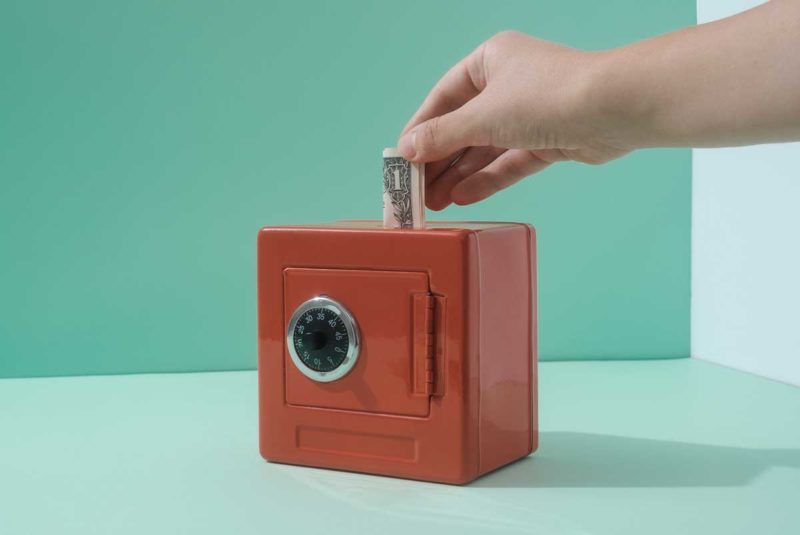Explore your mortgage options
Whether you’re shopping for a credit card or a personal loan, chances are, you’ve heard you should compare APRs. If you don’t know what that means, you’ve come to the right place.
APR stands for annual percentage rate. In this article, we’ll explain how it works, what the different types are and how it’s calculated. We’ll also give you tips on how to get the best possible APR for your situation.
Ready for a Personal Loan?
Applying through Rocket LoansSM is fast and easy.
Checking your options won’t affect your credit score.
Understanding APR: Definition and How it Works
So, APR stands for annual percentage rate, but what does that actually mean? Simply put, the APR is a metric that combines the interest rate with any lender fees to calculate the total (or actual) cost of borrowing money.
It’s important to understand that the APR is not the same thing as the interest rate. The interest rate your lender charges is only part of the APR.
That’s why APR is thought of as the true cost of borrowing money.
Loan APR vs. credit card APR
Lenders that issue loans like personal loans or conventional mortgage loans charge fees as part of their business. The origination fee is the most common type of loan fee and is always part of the APR you’ll see for a loan (unless you weren’t charged an origination fee).
If you follow your repayment timeline for a loan, you’ll end up paying the APR as part of your monthly payment.
With credit cards, origination fees aren’t as common, so you’re more likely to see APRs used interchangeably with interest rates. Another important difference is that the APR will only accrue if you carry a balance on your card from one month to the next. If you pay off what you charge in full each month, you usually won’t pay the APR on a credit card.
Types of APR
APRs are either fixed or variable. The designation comes from how the interest works. When choosing a loan, consumers will often have the option to choose between a fixed or variable interest rate.
As the name suggests, a fixed interest rate will remain the same over the life of the loan. A variable interest rate can change over the life of the loan and can potentially increase depending on what’s happening in the broader economy. This can have a big impact on your monthly payments.
Most credit cards come with variable APRs. However, there are additional types you need to be aware of with credit cards.
See What You Prequalify For
Get prequalified offers for personal loans from Rocket LoansSM within seconds. Like what you see? Same-day funding is available.
Checking your options won’t affect your credit score.
Credit card APRs
Types of credit card APR
Almost every credit card has this APR. It’s how much you’ll be charged on your purchases with the card if you carry a balance month to month.
The interest you’ll be charged if you take out a cash advance against your credit card. This rate is generally higher than your purchase APR.
One of the promotional APRs associated with balance transfer credit cards. The APR is usually calculated when the borrower transfers the outstanding balance to the new card.
A promotional APR that’s generally lower than the typical purchase ARP. You may even see 0% intro APR on some cards. This lower APR period expires after the introductory period ends.
How To Calculate APR on a Loan
Lenders use different formulas to calculate the APR based on the type of loan. But here’s a basic formula you can use for yourself.
APR = [((fees + interest) /loan principal) / number of days in loan term] X 365 X 100
We’ll walk through an example. Let’s say you want a $20,000 personal loan. You and your lender agree to the variables below:
- Fees: $1,000
- Total Interest: $14,000
- Loan principle: $20,000
- Days in loan term: 1,825 (5 years)
First, you’d add the fees to the total interest due: $1,000 + $14,000 = $15,000.
Next, you’d divide that figure by the loan principal: $15,000 / $20,000 = 0.75
Then, you’d divide that number by the days in the loan term: 0.75 / 1,825 = 0.00041
Multiply that decimal by 365: 0.00041 X 365 = 0.15
Finally, multiply that amount by 100: 0.15 X 100 = 15%
Tips for Getting a Better APR
When it comes to APRs, taking the time to be strategic can save a lot of money in the long run. Here are some tips for securing the best possible APR, whether you’re looking at loans or credit cards:
- Shop lenders: Take the time to shop lenders. Don’t limit yourself to the brick-and-mortar stores in your area. Make sure to check out online lenders as well, as many offer competitive rates.
- Take steps to improve your credit score: The better your credit score is, the better rates you’ll typically be offered by lenders. You can take steps to improve your credit score in as little as a few months. If you have a lower score, it might be worth holding off on a loan or credit card until you can get that score up.
- Take advantage of promotional offers: While 0% intro APR can be a great option, there are other types of offers. For example, some lenders will run promotions related to origination fees or closing costs. Make sure to factor these potential savings into your calculations.
Annual Percentage Rate FAQs
There’s a lot of confusion when it comes to APRs. We’ve put together a list of FAQs and their answers to help you sort through some of the most common issues that come up.
What is a good APR?
With loans, that’s relative because the rates are closely tied to the larger economy. With a personal loan, it’s not uncommon to see APRs at 20% or above.
In terms of a good credit card APR, you can’t do better than 0%, which is a common introductory offer. Just be aware of what you’ll owe once that promo rate expires.
Is APR charged monthly?
With credit cards, the APR rate is charged monthly. It will only apply if you carry a balance into the next month. So if you pay off your credit card balance in full each month, you won’t pay the APR.
Loans are different because it depends on the structure of the loan. For example, the origination fee is part of the APR, but some lenders will take it out of the total amount issued while others might prorate a charge for it over the life of the loan. Regardless, you will pay interest as a part of your monthly payment.
How is APR calculated on a loan?
The basic formula is APR = [((fees + interest) /loan principal) / number of days in loan term] X 365 X 100. See the section above on how APR is calculated for an example.
Is there a way to lower APR?
If you have a variable APR, your APR could fall if interest rates fall. Conversely, it could increase if interest rates rise.
If you have a fixed rate APR, the only way to lower your rate would be to refinance the loan.
Final Thoughts on APR
APR gives you a clearer financial picture of the cost of borrowing money than the interest rate alone because it also accounts for the fees you’ll pay. Just remember to factor your repayment timeline into the equation when considering your options. Promotional windows can be a double-edged sword if you can’t pay off your balance before a new, higher rate kicks in.
Get Prequalified for Loans from $2,000 to $45,000
Rocket LoansSM offers personal loans from $2,000 – $45,000. From debt consolidation to unexpected expenses, we’ve got you covered.
Checking your options won’t affect your credit score.
The Short Version
- APR combines the interest rate with lender fees to calculate the total cost of borrowing money
- All APRs are either fixed or variable, depending on how the interest is calculated. There are other types of credit card APRs like purchase APR and cash advance APR
- Tips for getting the best possible APR include shopping lenders, taking advantage of promotional offers and taking steps to improve your credit score




